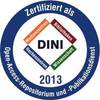Preview |
PDF, English
- main document
Download (43MB) | Terms of use |
Abstract
Effective Lewis acidity denotes the perturbative influence of a Lewis acid on the electronic structure of a coordinated Lewis base, thereby adressing the extent of induced activation. This dissertation investigates the deliberate application of effective Lewis acidity through group-14-based Lewis acids in catalysis and coordination chemistry. The catalytic potential of the Lewis superacid Si(catCl)2 in the C–O bond metathesis of oligo- and polyethers was systematically examined. Its high activity, even in the presence of strongly chelating substrates, enabled the chemoselective upcycling of polyethers. Mechanism-guided catalyst design led to a second-generation system with enhanced activity, capable of mediating the challenging cross-metathesis of alkyl ethers. Subsequent in-depth analysis of deactivation pathways provided the basis for an optimized protocol that enabled in-situ catalyst generation under ambient atmosphere, even tolerating protic functionalities. The broad substrate scope presents the opportunity for a more sustainable circular economy for this polymer class. The impact of effective Lewis acidity on transition metal chemistry was further explored with two ambiphilic group-14-based Z-type ligands, addressing a field previously dominated by group 13 and 15 Lewis acids. The palladium chemistry of the respective silane ligand was investigated in depth, yielding the first isolated anionic square-planar Pd(0) complex; a proposed key intermediate in cross-coupling catalysis. Redox studies revealed Z-type-triggered reversible Pd(0)/Pd(II) electromerism, representing the first example for this redox-pair and a unique opportunity to further use Z-type interactions for spin-state switching. A systematic study on the bonding characteristics in a series of the first Rh(I)-silane Z-type complexes fundamentally eased the understanding of the influence of the metal’s coordination environment on the Z-type interaction. Finally, the limits of Z-type chemistry were pushed by achieving the synthesis and characterization of the first group 8 Z-type complex and exploring the oxidation chemistry of this molybdenum complex.
| Document type: | Dissertation |
|---|---|
| Supervisor: | Greb, Prof. Dr. Lutz |
| Place of Publication: | Heidelberg |
| Date of thesis defense: | 7 November 2025 |
| Date Deposited: | 19 Nov 2025 13:59 |
| Date: | 2025 |
| Faculties / Institutes: | Fakultät für Chemie und Geowissenschaften > Institute of Inorganic Chemistry |
| DDC-classification: | 540 Chemistry and allied sciences |
| Controlled Keywords: | Katalyse, Silicium |









